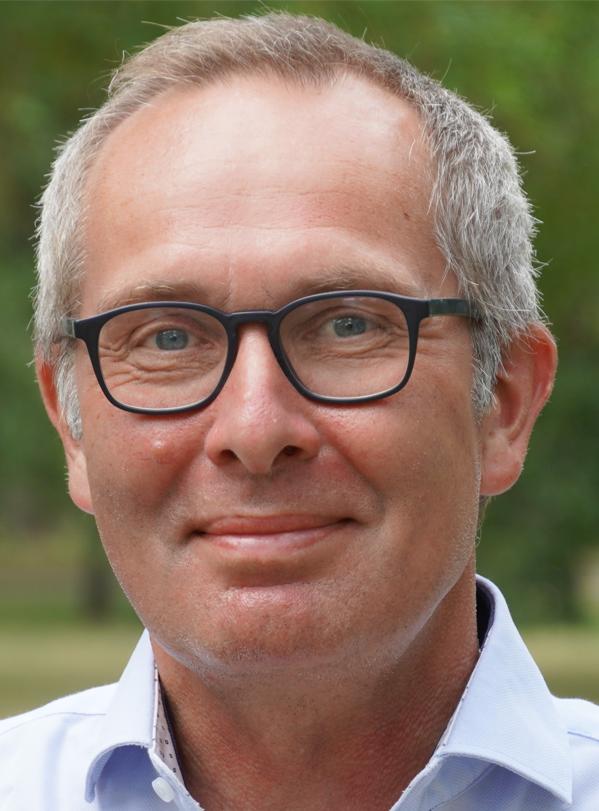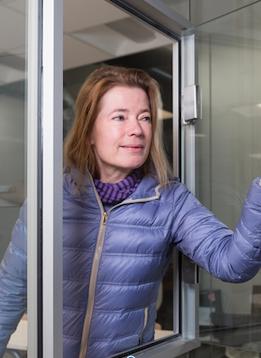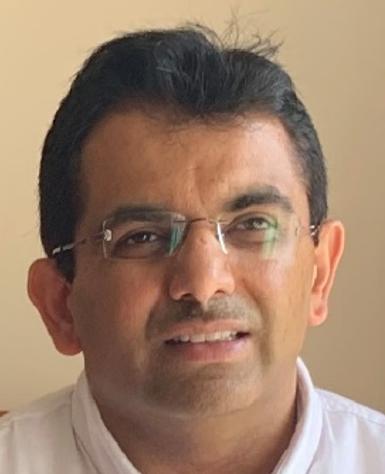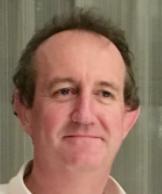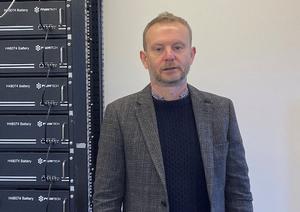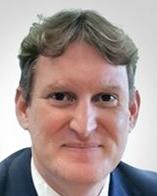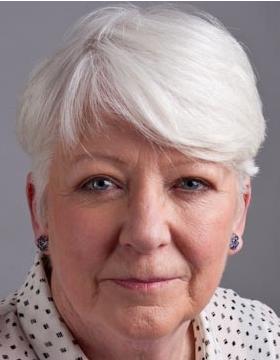Keynotes
-
RESILIENT DESIGN: KEYNOTE SPEAKERS
Peter Holzer: Peter Holzer holds a degree in Mechanical Engineering (1994) and a doctorate in Architecture (2009), both at Technical University of Vienna. He works both in industry and academia where he worked in the Department of Building and Environment at Danube University Krems from 1996 to 2012 as research associate then head of department. He still teaches Building Physics and Building Services at the University of Applied Sciences, Campus Wien. Since 2011 he has been Managing Director of the Vienna branch of the IPJ Ingenieurbüro P. Jung, a consultancy office in building physics, indoor comfort and building energy systems and since 2013 is a shareholder of the Institute of Building Research & Innovation, a research entity specialized on sustainability of buildings. He is currently leading the IEA EBC Annex 80 on Resilient cooling of Buildings and has designed the extraordinary Austrian Pavilion at the Dubai Expo using highly innovative cooling and energy storage systems.
Philomena Bluyssen: Prof. dr. Philomena M. Bluyssen received her Master’s of building engineering in 1986 at the Technical University of Eindhoven, and in 1990 her PhD at the Technical University of Denmark with a thesis on ‘Air quality evaluated by a trained panel’. After working for more than twenty years as researcher with TNO, where she coordinated among others several European projects on optimisation of Indoor environment quality and energy use, she was appointed full Professor Indoor Environment in 2012 at the Faculty of Architecture and the Built Environment, of the Delft University of Technology. At the TU Delft she initiated the SenseLab, a semi-lab environment sponsored by 25 companies and organisations, in which she recently performed research on airborne transmission of exhaled aerosols. In 2019 Bluyssen was appointed Visiting Professor at Feng Chia University in Taichung, Taiwan. Prof. Bluyssen is member of the (inter)national organisations TVVL, REVHA, ASHRAE, ISIAQ and CIB. She is co-founder of the Dutch ISIAQ chapter and was the first president of ISIAQ.nl. She has contributed and/or authored to more than 275 publications, and has been invited as guest, distinguished or keynote lecturer at several conferences and universities. For ‘The Indoor Environment Handbook: How to make buildings healthy and comfortable’, she received the Choice Outstanding Academic Titles of 2010 Award.’ Her book ‘The Healthy Indoor Environment – How to assess occupants’ wellbeing in buildings’, received the IDEC 2016 Book Award.
Abstract of her talk: Since the first outbreaks of COVID-19, the question of how to minimize transmission of SARS-CoV-2 indoors has become one of paramount importance. SARS-CoV-2 has three possible transmission routes: 1) direct transmission of virus carrying droplets between people in close proximity, by coughing, sneezing or talking; 2) indirect transmission via deposited, or transmitted, infectious droplets via surfaces; 3) airborne transmission through virus carrying, small, airborne droplets (also named ‘aerosols’) emanating from infected individuals. As airborne transmission is now known to be the major source of transmissions, the background to airborne transmission research is outlined and measures to reduce airborne transmission are discussed. She reaffirms the urgency of providing pathogen safe, and comfortable buildings in the future. This will require both a better understanding of how pathogens spread within buildings, and reliable and resilient new ways of ventilating indoor spaces that are flexible, affordable, efficient and effective. It is clear that the question is not only ‘What ventilation rates, and strategies, are required to protect building occupants against infection transmission?’, but also ‘How would it be best to ventilate for different situations’?
Rajat Gupta is Director of the multi-disciplinary Oxford Institute for Sustainable Development (OISD) and Low Carbon Building Research Group at Oxford Brookes University (Oxford, UK). He holds a senior professorial chair in sustainable architecture and climate change. Rajat’s research interests lie in evaluating building performance from a socio-technical perspective, smart local energy systems, local energy mapping, scaling up energy retrofits and tackling summertime overheating in homes and care settings. As Principal Investigator (PI) he has won over £13 million in research grants to investigate these subjects. Rajat is currently UK-PI of the £1.3 million EPSRC-DST sponsored RESIDE project on residential building energy demand reduction in India. He is Co-Investigator (Co-I) on two NERC funded projects worth £1.09 million on climate resilience of care settings. He is also Co-I on the £9 million EPSRC EnergREV project on scaling up smart local energy systems and lead academic on the Innovate UK £15.2 million smart local energy system demonstrator, Local Energy Oxfordshire. Rajat has been appointed as the Secretary of the international Passive and Low Energy Architecture (PLEA) network. He is also an appointed member of DEFRA’s Air Quality Expert Group. Rajat has delivered 50 conference keynotes and produced over 150 publications.
See: https://www.brookes.ac.uk/templates/pages/staff.aspx?uid=p0020979
Tim Sharpe is head of School at the Mackintosh School of architecture, Glasgow. He is a graduate of Dundee and Strathclyde Universities, and an architect with both practice and research experience in a number of fields, including user participation, environmental architecture and low energy design. His Ph.D. examined the nature design participation and looked in detail at the potential for CAD for participatory design projects. He co-founded the Mackintosh Environmental Architecture Research Unit, of which he is the Director. MEARU has been in operation for over 15 years and has an established track record of high quality research into environmental architecture. His work has included research into building integrated renewable energy; energy efficient refurbishment of housing, and current research is investigating the design and performance of low energy and low carbon buildings. Funded projects include building performance evaluation of a range of low energy houses across the UK, and research into ventilation, health and well-being in housing. See: https://www.strath.ac.uk/staff/sharpetimothyprofessor/
Ian Chilvers gained his PhD in Power Engineering and is now Director of Smart Power Systems, a company whose core expertise lies in Electricity Network Innovation. They provide design consultancy and systems solutions building on a wide range of expertise in the analysis, design and commissioning of electrical power systems. Their projects cover traditional electricity networks, renewable energy / Distributed Generation and Microgrid / Smart Grid projects and range in scale from individual houses to whole island systems. They also develop and supply Microgrid / Smartgrid based solutions designed to mitigate grid connection issues, reduce connection and operating costs whilst maintaining grid code compliance. Their focus is increasingly on research and development of systems to mitigate grid constraints, provide buildings energy systems that can operate during power outages and optimise the orchestration of energy demand and renewable supplies within buildings and micro-grids to combat rising energy costs and carbon impacts.
Nick Hopper has a B.A in Product Design from Solent University of Southampton and an MBA in Technology Management from the Open University.ty. Nick joined Monodraught as a design engineer in 1996 and is now its technical Director and a Director of the multi-award winning company. He has a vast amount of experience in both the design of a natural ventilation schemes using thermal dynamic modelling software and is the inventor of a number of innovative products used by the company including the Windcatcher® top down ventilation terminals, that are now incorporated into a number of different modelling packages including IES. He works with systems combining Energy Storage with ventilation and other low energy hybrid ventilation and cooling systems that have been in great demand during the COVID pandemic.
Sue Roaf is Emeritus professor of Architectural Engineering at Heriot Watt University in Edinburgh. She is an award winning author, teacher, architect and solar energy pioneer. Her 22 books include: Ecohouse: A Design Guide; Adapting Buildings and Cites for Climate Change; Closing the Loop: Benchmarks for Sustainable Buildings, Energy Efficient Buildings, Adaptive Thermal Comfort and The Ice-Houses of Britain. She Chaired PLEA 2017 conference promoting natural energy buildings (www.plea2017.net), has Co-Chaired the Windsor Conferences on Comfort 1994 – 2020 (www.windsorconference.com ) and the Comfort at the Extremes Conference in Dubai 2019 (www.comfortattheextremes.com ). Her presentation on Comfort Justice at COP26 is available on: https://www.youtube.com/watch?v=mbsdb70e4SM
Benjamin Jones is an Associate Professor at the University of Nottingham Department of Architecture and Built Environment with a Master’s Degree in Aeronautical Engineering from the University of Salford. He was a Senior Software Engineer at BAE Systems before completing an Engineering Doctorate in Environmental Technologies at Brunel University. His focus is on measurement and modelling approaches to the indoor environment that can inform policies to create low-carbon and healthy building stocks. He is particularly interested in the energy efficient ventilation of buildings and its relationship with indoor air quality and occupant health. He has been providing strategic policy analysis to UK government departments, international organizations, and businesses on a range of issues including the public health impacts in urban, the prediction of distribution of infiltration rates across the English housing stock, particulate emissions from cooking, and national stock modelling. His work is also now informing the UK SAGE deliberations on minimising COVID transmissions. He is a UK representative on the board of the Air Infiltration and Ventilation Centre, and a committee member of the Chartered Institution of Building Services Engineers Natural Ventilation Group.
Chris Iddon is a Research Associate at the University of Nottingham and an expert on assessing the role of the built environment on the risk of Covid transmission. He is also the chair of the CIBSE Natural Ventilation group and has co-authored the CIBSE Covid Ventilation Guidance and the CIBSE Air Cleaning Technologies guidance. He has a background in biochemistry and has worked in the built environment for the last 15 years.
Alan Kennedy-Asser is a research associate in climate science based at the University of Bristol. Since 2019, Alan has focussed on summer heat extremes in the UK and how these are projected to change in the Met Office’s latest climate projections (UKCP18). He is currently working on the UK Climate Resilience Program funded OpenCLIM project with colleagues at the University of East Anglia, (https://www.ukclimateresilience.org/projects/openclim-open-climate-impacts-modelling-framework/) University of Bristol, Newcastle University and the Centre for Ecology and Hydrology. The project is developing a framework of inter-connected climate impacts models for a range of sectors including heat stress/health, flooding, agriculture, water supply and biodiversity. Alan will present an overview of the latest results from the OpenCLIM project, as well as the 3rd Climate Change Risk Assessment (CCRA3) and other projects from the UK Climate Resilience Program.
